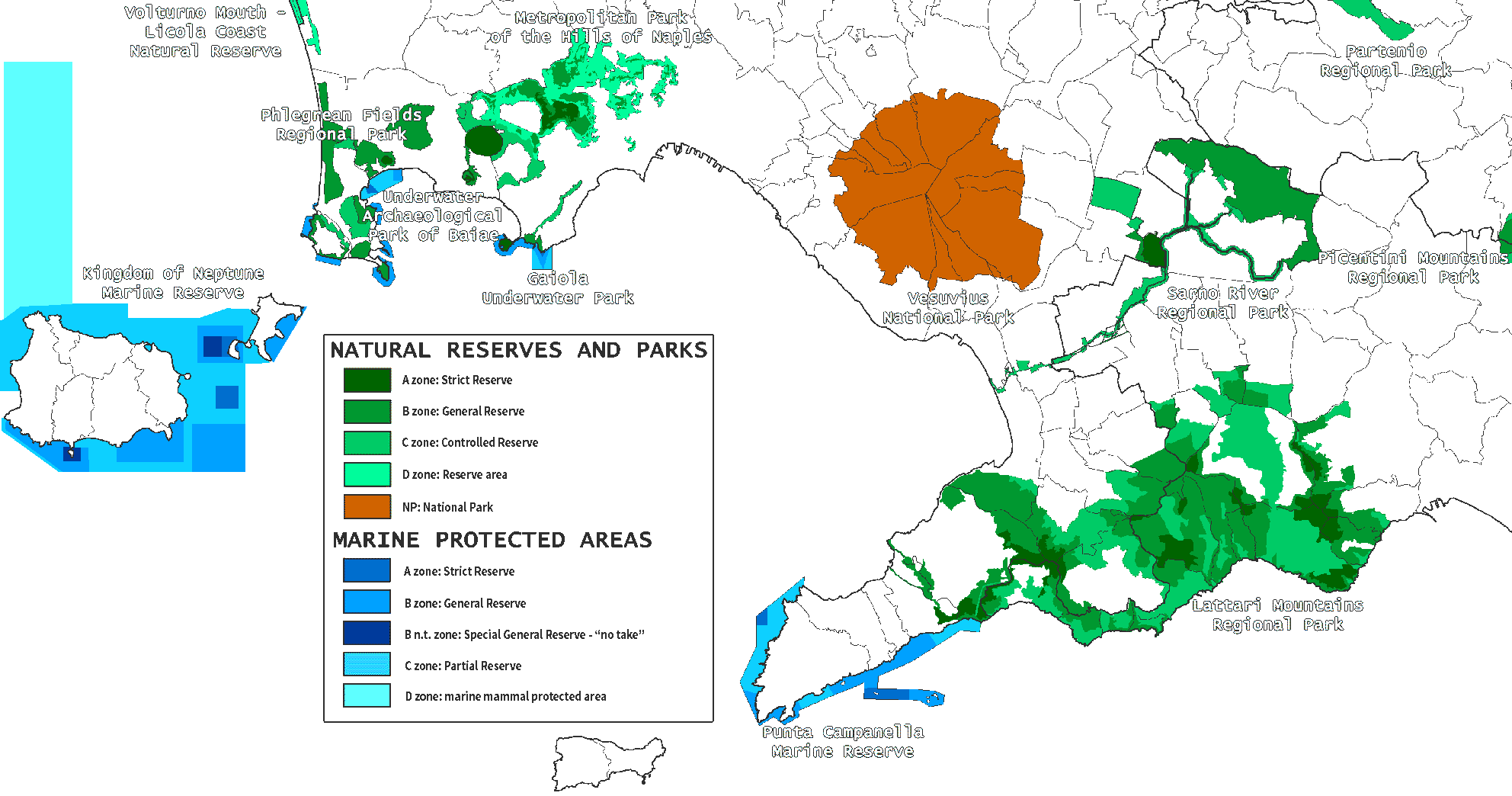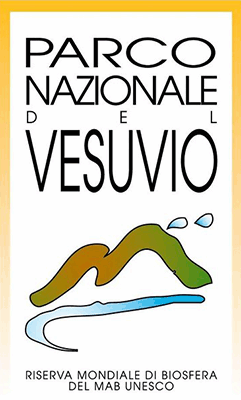Vesuvius National Park
Vesuvius, famous symbol of Naples and apparent landmark from all the surrounding areas, is part of volcanic complex together with Mount Somma. Its National Park was established to preserve the values or the territory and its animal and vegetal species, as well as to promote environmental education and research. Vesuvius is mainland Europe's only active volcano, dormant since its last eruption in 1944, but constantly monitored due to the ever present danger of eruption, putting at risk tens of thousands of inhabitants in the cities built at its foot; those were in fact all obliterated during a stronger one in the 17th century, but the most disastrous event dates back to the year 79 A.D., when an explosive eruption destroyed buried the cities of Pompeii, Herculaneum and Stabia.
The 1281 m tall mountain is covered by a very lush nature, hosting a huge variety of flora and fauna for its relatively small area; lots of cultivated areas too: famous is the Lacryma Christi wine, made from grapes grown on its slopes, but also the "al piennolo" cherry tomatoes, apricots, cherries, citrus fruits, walnuts and olives, many of which have dedicated festivals in some of the 13 municipalities among which the territory is split.
The easiest way to reach the top, is by the asphalt road from Torre del Greco, until a parking a few km from the final footpath leading to the crater (requiring an entrance fee); it is possible to climb by road bike until that point, if you're up for a challenge, and there's some mountain bike routes within the mountain, but it is an area we don't deal, so you should look for other local companies. To those who want to leave for a longer ride up there starting from Sorrento Peninsula or Amalfi Coast, we usually don't recommend cycling all the way, because of the very busy roads until Torre del Greco; you can instead reach it by the local train Circumvesuviana (make sure you choose a quiet time of day if you want to bring the bike on board) from most towns of Sorrento Coast, and start the climb from there after skipping the unpleasant part.
Other Protected Areas nearby:





 Ring us!
Ring us!